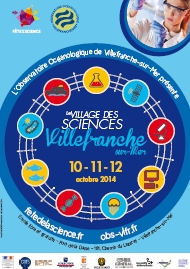Science Festival at the Villefranche-sur-Mer Observatory: a cruise into the world of cutting-edge oceanographic research.

This is an opportunity to discover the world of scientific research in magnificent buildings classified as historic monuments, and to learn about marine sciences in a context of fun and convivial educational workshops. We will offer a series of activities for both adults and children. Note that Friday, October 10, will be exclusively reserved for schools.
The general public will be welcome in the afternoons of Saturday and Sunday, October 11 and 12, with free admission and no reservation required.
Participants will be invited to explore scientific activities through a pathway of several stands combining explanatory readings, equipment manipulation, and various experiments in direct contact with researcher-animators and some plankton organisms studied in the laboratory.
These stands are rich and varied, ranging from the theme of climate change and ocean acidification to the presentation of marine invertebrates as models for therapeutic solutions, followed by a wonderful discovery of stands dedicated to marine observation and future ocean exploration robots.
From there, anyone can ask questions at the toxic algae stand and discuss with the scientific animators about the endangered food chain. Thus, understanding by visiting the stand of swimming fish larvae that studying their behavior and simulation models of their transport is essential to propose better management of fish stocks in the Mediterranean.
Visitors can also discover that the Observatory is working on the energy of tomorrow at the Biofuels stand and that our researchers are concerned about the health of the Mediterranean by regularly measuring physicochemical parameters, including the nutrients necessary for phytoplankton growth (phosphates, silicates, nitrites, and nitrates).
Furthermore, no visit to the observatory could be complete without stopping by the jellyfish stand and having their remarkable regenerative capacity explained, which allows them to be practically immortal, thus providing our researchers with a chance to study them to better understand the fundamental biological processes of cell aging that would be common to all species, as well as the evolutionary origins of biodiversity.
On Saturday, October 11, at 2:30 PM, a special stand will be dedicated to innovation within the observatory and will include a special “innovation-research” pathway to present patented instruments developed in collaboration between industry and our researchers. Some of these instruments are sold worldwide.
Thus, everyone can become aware of the scientific challenges of tomorrow and be offered a living testimony of the marine science research conducted at the observatory



